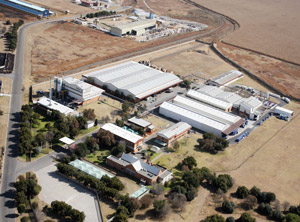SOUTH AFRICA
Automotive plastics market expected to reach USD 208m in 2016 / International players drive development / Local industry highly dependent on imports / Latest Frost & Sullivan study
South Africa’s market for automotive plastics amounted to USD 157m – or 7.5% of total state GDP – in 2009 and is expected to reach USD 208m by 2016, a recent study by Frost & Sullivan (London / UK; www.frost.com) has found. The study, titled “South African Market for Automotive Plastics”, found that of the five leading automotive plastics discussed – including PC, polyurethanes, PP, polyamides and ABS – only polycarbonate has carved out a mature position for itself in the country’s automotive industry, while the other four materials are still in the growth stage.
That growth, however, hit a snag as the global economy began to contract in 2008, with South Africa’s automotive market reeling as purchasing power and exports declined. Before the downturn, Frost & Sullivan found that the automotive industry actually saw considerable growth and now that the crisis has bottomed out the market is expected to grow at a minimal rate in the next five years.
Since plastics offer lighter weight alternatives to metal and glass, their use in the automotive industry has grown steadily, Frost & Sullivan found; adding that while in 1970 the average vehicle contained about 27 kg of plastics, nowadays the plastics content amounts to almost 163 kg. The main application areas for automotive plastics include body panels, smart materials, safety features, electronics and car interiors.
Polyurethane is one of the materials finding increasing application in the automotive segment, mostly as a foam to buffer engine sounds. Frost & Sullivan’s examination of South Africa’s automotive PU market found that it generated revenues of USD 19m in 2009, close to meeting what the researchers have pegged as the maximum future market size, roughly USD 23m. Very few local producers serve this market, the study found, with the top three companies representing the largest share of total revenues.
That growth, however, hit a snag as the global economy began to contract in 2008, with South Africa’s automotive market reeling as purchasing power and exports declined. Before the downturn, Frost & Sullivan found that the automotive industry actually saw considerable growth and now that the crisis has bottomed out the market is expected to grow at a minimal rate in the next five years.
Since plastics offer lighter weight alternatives to metal and glass, their use in the automotive industry has grown steadily, Frost & Sullivan found; adding that while in 1970 the average vehicle contained about 27 kg of plastics, nowadays the plastics content amounts to almost 163 kg. The main application areas for automotive plastics include body panels, smart materials, safety features, electronics and car interiors.
Polyurethane is one of the materials finding increasing application in the automotive segment, mostly as a foam to buffer engine sounds. Frost & Sullivan’s examination of South Africa’s automotive PU market found that it generated revenues of USD 19m in 2009, close to meeting what the researchers have pegged as the maximum future market size, roughly USD 23m. Very few local producers serve this market, the study found, with the top three companies representing the largest share of total revenues.
 The BaySystems system house in Nigel / South Africa. Bayer is one of the key player's in the country's automotive plastics industry (Photo: Bayer MaterialScience) |
Indeed, South Africa’s market for automotive plastics largely is dominated by the big global industry players, including Bayer (Leverkusen / Germany; www.bayer.com), BASF (Ludwigshafen / Germany; www.basf.com), Dow (Midland, Michigan / USA; www.dow.com), DSM (Heerlen / The Netherlands; www.dsm.com) and DuPont (Wilmington, Delaware / USA; www.dupont.com). Local industry leaders include Protea Chemicals (Gauteng / South Africa; www.proteachemicals.co.za) and Sasol Polymers (Johannesburg / South Africa www.sasol.com).
Frost & Sullivan found that the international players dictate the market in terms of type and grade of material used in the vehicle parts manufactured by them. Since local companies usually are unable to meet these internationals’ demands regarding the required grades, most polymers used in South Africa’s automotive industry are imported. The same is true of moulded car parts, since many local companies have a hard time getting their hands on the necessary technology.
Frost & Sullivan found that the international players dictate the market in terms of type and grade of material used in the vehicle parts manufactured by them. Since local companies usually are unable to meet these internationals’ demands regarding the required grades, most polymers used in South Africa’s automotive industry are imported. The same is true of moulded car parts, since many local companies have a hard time getting their hands on the necessary technology.
23.08.2010 Plasteurope.com [217089]
Published on 23.08.2010
